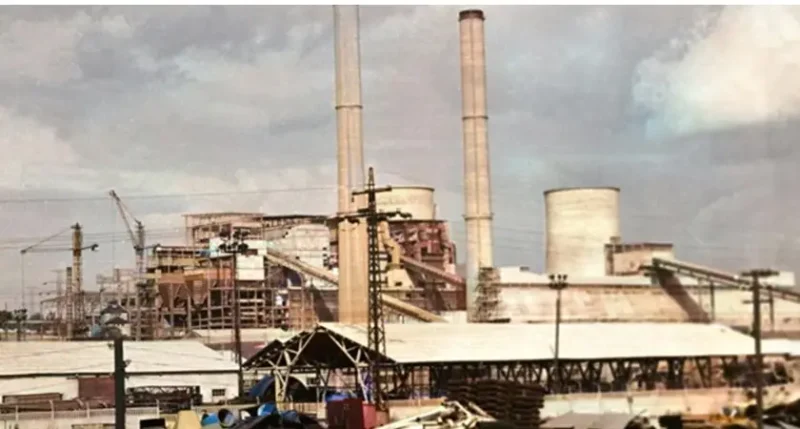
In the sixties, Bogatynia area turns again into a huge construction area: a coal electric plant is being built to form one industrial complex with the mine. New workers are being recruited countrywide. Whoever wants a job, gets it. Turów electric plant becomes a symbol of the socialist Poland technical advances. Never in a an earlier history did Polish engineers and workers succesfully executed such a complicated project.
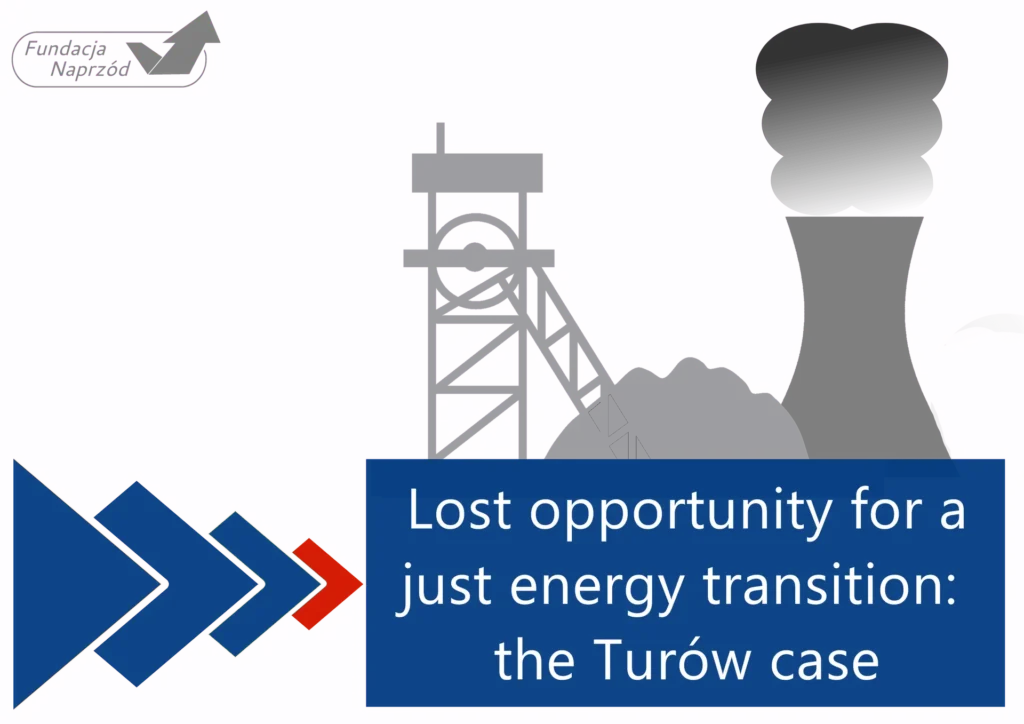
Read the introductory chapter and Chapter Two of the report:
A historic decision was made in 1957. The Council of Ministers decided to open Turów II open cast mine next to the existing mine. A decision is also made to build the Turów power planned with a planned capacity of 1200 MW. The power plant, the projects’ authors decided, would stand to the north of the opencast. There might be even two plants in a long tern, the decision-makers consider in the 1960s. The notion of a ‘Turów industrial district’, including the districts of Zgorzelec and Luban, appear [1]. It is to be another pride of the Polish socialist economy. In terms of coal production, the mine is already leading the way: by the end of the 1940s, all the other mines brought together in the United Lignite Industry were extracting just 6% of the raw material that Turów was producing [2].
Again, new workers come to the south-west of Poland, hoping for well-paid jobs and faster housing allocation. The former hope, at least, has a solid basis: for all who work on the industrial complex construction, there is a twenty per cent “Turów allowance”, not granted on any other large construction site. The radio and the press are encouraging young people to come to Bogatynia, and youth organisations are gathering volunteers. There is work for everyone, all you need is the will to do work. No pre-arrangements are needed: you come and you get a job.
Just like in the song that will resonate in the entertainment venues of the Zgorzelec region:
Far away on the edge of Poland
Something great is being built
There they don’t ask about the past,
So we are waiting for you, my friend.
Far away at the end of the country
Where border posts stand,
Where they don’t ask about the past,
Neither mine nor yours [3].
Again, the beginnings are difficult. There is a shortage of supplies, the existing shops are not prepared for so many customers, the clinics and doctors – for so many patients. The first meetings of the engineers building the power station are held at a ping-pong table – the promised office equipment has arrived incomplete [4]. Accommodation is hurriedly organised in the old barracks in Zgorzelec and in Sieniawka, in the 19th century buildings of the former sanatorium in Opolno-Zdrój. In Bogatynia itself, the halls of the former Carl August Preibisch textile factory on Kościuszki Street are turned into a workers’ hotel. These are temporary solutions: while the construction of the power plant is going on, the construction of housing estates where workers with their families will live in the long term is also starting. Particularly comfortable is the area which gains the name of ‘Emergency Area’. Located in the centre of Bogatynia, it is intended intended for mine and plant supervisory staff: they have four kilometres from it to the mine, six to the power plant. In case of an emergency, they will quickly be on site [5].
The villages of the Turoszow Area have seen a rapid increase in population. In 1950, Bogatynia had 5267 inhabitants, ten years later it had 10743. Zatonie, with a population of 1677, located in the vicinity of the new power plant, had 3677 inhabitants in the third year of the plant’s construction. Wigancice and Rybarzowice, villages with a population of around 400, had 895 and 767 inhabitants respectively in 1960. But the villages located to the south of the quarry recorded the most rapid growth. Porajów and Sieniawka counted together did not even have 250 inhabitants in 1950. A decade later, more than 3600 people live there. Opolno Zdrój, at the beginning of the century a green sub-mountain resort called Bad Oppelsdorf, had one thousand three hundred inhabitants in 1960 – earlier, there were just 440 people living there. The overall population of the region has increased by 144 per cent in ten years, and not all employees of the growing combine are even registered at their place of work [6]. Some came for a while, to make a quick buck, and moved on: in 1958, the redundancy rate of workers exceeds 40 per cent. In the following years, it drops: in 1967, it is only 16.5 per cent [7]. One could repeat after Stanisław Hofman that the new industrial complex also lived to see people who decided to tie their fate to it.
In 1960, about 12,000 people work in the mine and power plant.
The clear majority are unmarried men, more than half are not even 30 years old and also more than half have no education or profession in hand. This last circumstance is of concern to the mine managers: in 1960 a Basic Mining School was established in Bogatynia, in Zgorzelec a Mining and Energy Technical School, and in 1964 a Basic Energy School in Trzcinec [8]. The policy of accepting anyone willing to work also has its darker side. Alcoholism is a problem among some of the staff, thefts and assaults recur. Bogatynia’s reputation as one of the most dangerous places in the voivodeship, confirmed by police statistics, persists even in the 1980s [9].
Today, no traces of the years of chaotic development can be seen in Bogatynia. No one is accommodated in the workers’ hotel any more. There is even no trace of Preibisch halls building, on the site of which a supermarket was built. As in any Polish town, estates of apartment blocks and single-family houses have sprung up.
Walking around the northern part of the city, above Pocztowa street, one has no doubt that the inhabitants are well off. A peaceful harmony still prevails on the Emergency Estate, where Energetyków Street runs between single-storey houses in pastel colours, between evenly trimmed lawns. The streets along the Miedzianka River even deserve to be called charming. Here, wooden houses, true gems of Upper Lusatian architecture – if they have been renovated, which unfortunately cannot be said of all of them – stand, having survived all the historical storms (and the 1997 catastrophic flood). In the main square in the centre, a fountain flashes with light after dark: the fashion for illuminated water features has arrived here too.
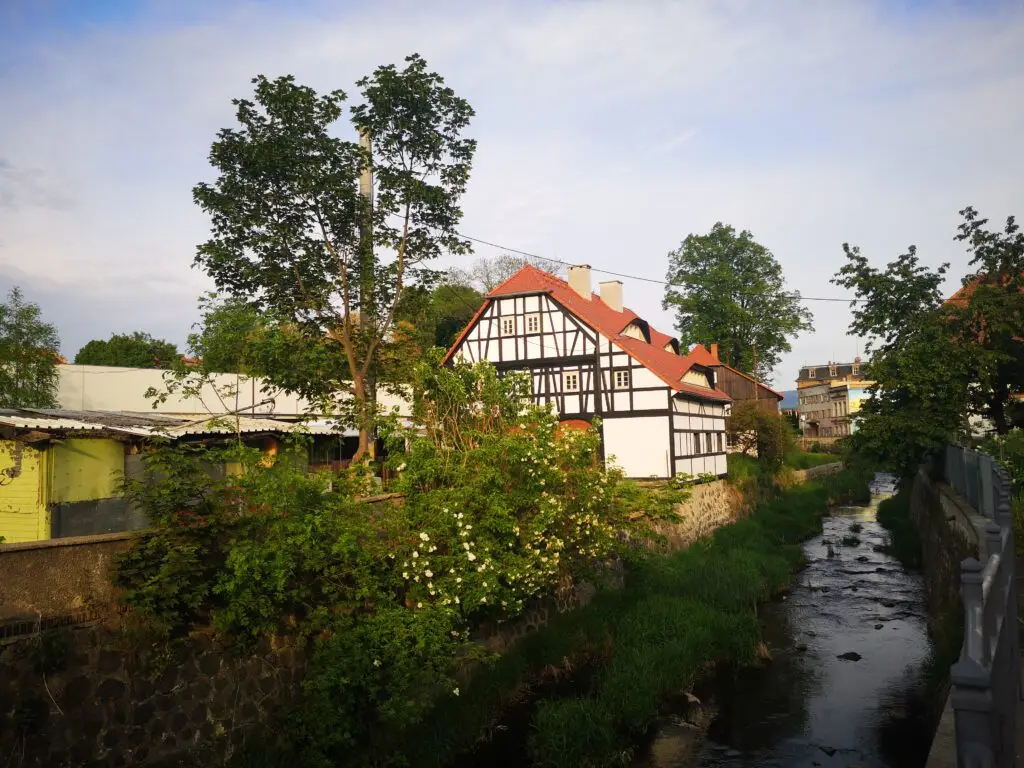
But let’s not look ahead. In the mid-1960s, Bogatynia was mainly famous for its industrial architecture.
The construction of the power station is the largest energy investment in Europe at that time.
It was commissioned on 20 July 1965 and expansion began almost immediately. In 1971, the power station has seven units and reaches a capacity of 2000 MW. If today politicians elevate Turów to the status of a symbol of Poland’s energy independence, then in the 1960s and 1970s it was a symbol of the success of the People’s Republic of Poland, the triumph of domestic technical thought and industriousness, the cooperation of plants from different regions. And also fruitful international cooperation, and not only with socialist countries.
Boilers are manufactured for Turów in Racibórz. Parts for conveyor belts, bridge spans, steel, gears, pumps, cables…. Łabędy, Gliwice, Piotrków, Poznań, Żary, Warsaw… There is hardly a large industrial plant that does not send some of its production to Turów. The 400,000 workers in Poland work to some extent for our little industrial region. Further and further circles cross the national borders. In Leningrad, Soviet comrades are preparing huge turbines for the Turów power plant, the GDR is producing huge mining machinery, the Czechs pumps and pipelines. With friends we get everything on great terms. West Germany – pumps for power stations. Austria – gearboxes, England – the “Bailey” company – prepares all the automation. In these countries we pay foreign exchange for everything, but that’s the way it is – we don’t produce many things at home. These we have to import
– wrote the author of a brochure, which was intended to help young people understand the importance of brown coal and of Turów industrial development [10].
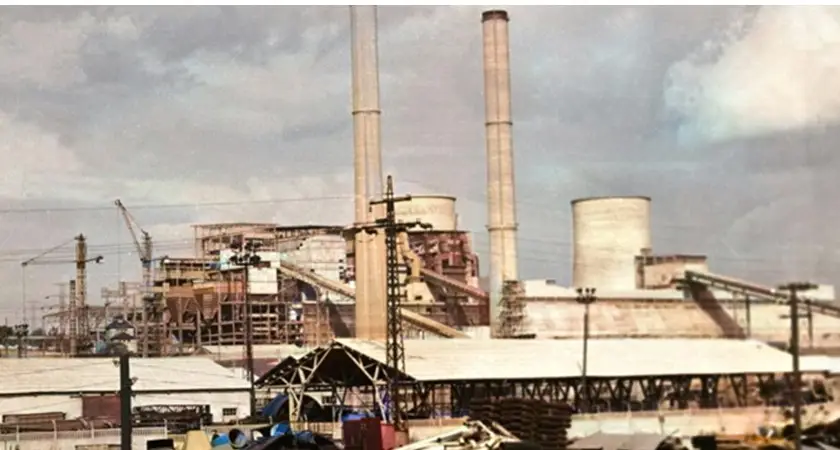
The still unfinished industrial complex was visited by one high-ranking delegation after another. On 5 September 1962, the First Secretary of the Central Committee of Polish United Workers’ Party Władysław Gomułka and Prime Minister Józef Cyrankiewicz came to inspect the site and meet the workers. Less than three years later, Prime Minister Piotr Jaroszewicz came with another visit. In 1963, the Minister of National Defence Marian Spychalski brings a representative of the USSR – Marshal Rodion Malinovsky [11] to Turów.
None of the esteemed guests could imagine that in sixty years’ time Turów would be the talk of the whole of Europe, but not because of its excellent exploitation results, but because of the conflict between Poland and its southern neighbour, which in addition would no longer be brotherly socialist Czechoslovakia, but the Czech Republic.
And yet the first harbingers of this conflict appear precisely in these years, when the power station is growing and the Turów II opencast is deepening.
(to be continued)
[1] A. Szpotański, Kotlina Turoszowska, p. 75.
[2] Z. Dobrzyński, Płynie struga węgla, p. 45.
[3] K. Dziubacka, Przemysł w krajobrazie kulturowym wsi : uwarunkowania jakości życia – kierunek i dynamika zmian, Oficyna Wydawnicza Atut – Wrocławskie Wydawnictwo Oświatowe, Wrocław 2015.
[4] A. Szpotański, Kotlina Turoszowska, p. 119; K. Dziubacka, Przemysł…, p. 102; Z. Dobrzyński, Płynie struga węgla, p. 60.
[5] Z. Dobrzyński, Płynie struga węgla, p. 62; K. Dziubacka, Przemysł…, p. 102-103.
[6] F. Kapusta, Przemiany struktury agrarnej w rejonie Turoszowa w latach 1957-1963, Zeszyty Badań Rejonów Uprzemysławianych, vol. 8, 1964, Komitet Badań Rejonów Uprzemysławianych przy Prezydium PAN, Pracownia Badań Rejonów Uprzemysławianych przy Wydziale I PAN; K. Dziubacka, Przemysł…, p. 102-103.
[7] K. Dziubacka, Przemysł…, p. 110-111.
[8] A Szpotański, Kotlina Turoszowska, p. 75 i 119-122; red. H. Izydorczyk, KWB Turów, p. 22.
[9] K. Dziubacka, Przemysł…, p. 110-111; A. Szpotański, Kotlina Turoszowska, p. 88.
[10] A.Strumff, Turów – brunatny skarb, Państwowe Zakłady Wydawnictw Szkolnych, Warszawa 1964, p. 26.
[11] A. Szpotański, Kotlina Turoszowska, p. 121-122.
Piotr Lewandowski, Iwona Lewandowska and Czesław Kulesza co-operated in the preparation of this report.

This report was developed with the support of Journalismfund Europe.
Subscribe to Cross-border Talks’ YouTube channel! Follow the project’s Facebook and Twitter page! And here are the podcast’s Telegram channel and its Substack newsletter!
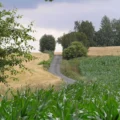
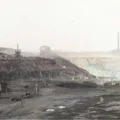
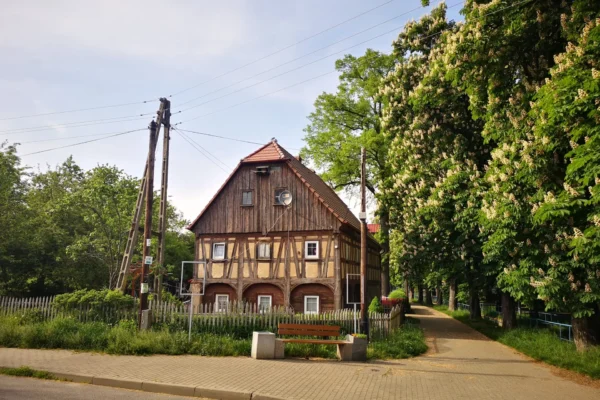
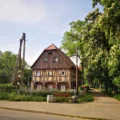
![Jiu Valley: is there a life after coal? [GALLERY]](https://www.foundintransition.eu/wp-content/uploads/2024/01/wieza-wyciagowa-i-chmury-scaled-1200x675-1-600x400.jpg)
![Jiu Valley: is there a life after coal? [GALLERY]](https://www.foundintransition.eu/wp-content/uploads/2024/01/wieza-wyciagowa-i-chmury-scaled-1200x675-1-120x120.jpg)
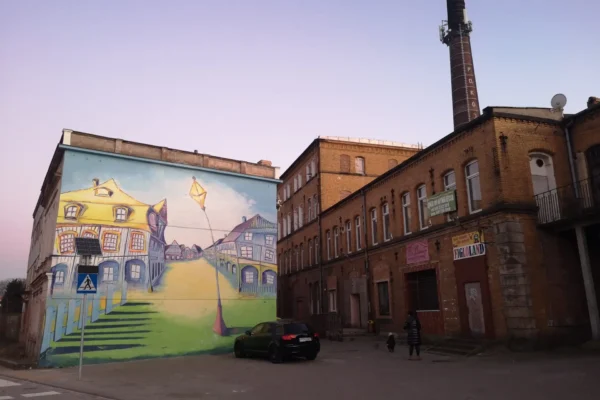
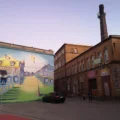
![There is no just transition without trust and social capital [interview]](https://www.foundintransition.eu/wp-content/uploads/2024/01/Paroseni-scaled-1200x675-1-600x400.jpg)
![There is no just transition without trust and social capital [interview]](https://www.foundintransition.eu/wp-content/uploads/2024/01/Paroseni-scaled-1200x675-1-120x120.jpg)
9 Comments
Lost Opportunity for a Just Transition: the Turów case [PART FIVE: At Any Cost] - Cross-border Talks
14 October 2023[…] Opportunity for a Just Transition: the Case of Turów Lignite Mine. PART TWO: In the New Poland Lost Opportunity for a Just Transition: the Case of Turów Lignite Mine. PART THREE: Pride of Social… Lost Opportunity for a Just Transition: the Case of Turów Lignite Mine. PART FOUR: First Worries […]
Lost Opportunity for a Just Transition: the Case of Turów Lignite Mine. PART SEVEN: Arrogance and Lack of Empathy - Cross-border Talks
5 November 2023[…] Opportunity for a Just Transition: the Case of Turów Lignite Mine. PART TWO: In the New Poland Lost Opportunity for a Just Transition: the Case of Turów Lignite Mine. PART THREE: Pride of Social… Lost Opportunity for a Just Transition: the Case of Turów Lignite Mine. PART FOUR: First Worries […]
Lost Opportunity for a Just Transition: the Case of Turów Lignite Mine. PART EIGHT: Barriers and water pipes - Cross-border Talks
14 November 2023[…] Opportunity for a Just Transition: the Case of Turów Lignite Mine. PART TWO: In the New Poland Lost Opportunity for a Just Transition: the Case of Turów Lignite Mine. PART THREE: Pride of Social… Lost Opportunity for a Just Transition: the Case of Turów Lignite Mine. PART FOUR: First Worries […]
Lost Opportunity for a Just Transition: the Case of Turów Lignite Mine. PART ELEVEN: There will be nothing without the mine - Cross-border Talks
20 December 2023[…] Opportunity for a Just Transition: the Case of Turów Lignite Mine. PART TWO: In the New Poland Lost Opportunity for a Just Transition: the Case of Turów Lignite Mine. PART THREE: Pride of Social… Lost Opportunity for a Just Transition: the Case of Turów Lignite Mine. PART FOUR: First Worries […]
Lost Opportunity for a Just Transition: the Case of Turów Lignite Mine. PART TVELVE: Uncertainty - Cross-border Talks
10 January 2024[…] Opportunity for a Just Transition: the Case of Turów Lignite Mine. PART TWO: In the New Poland Lost Opportunity for a Just Transition: the Case of Turów Lignite Mine. PART THREE: Pride of Social… Lost Opportunity for a Just Transition: the Case of Turów Lignite Mine. PART FOUR: First Worries […]
Lost Opportunity for a Just Transition: the Case of Turów Lignite Mine. PART THIRTEEN: Past Covered in Coal, Future Uncertain - Cross-border Talks
26 May 2024[…] Opportunity for a Just Transition: the Case of Turów Lignite Mine. PART TWO: In the New Poland Lost Opportunity for a Just Transition: the Case of Turów Lignite Mine. PART THREE: Pride of Social… Lost Opportunity for a Just Transition: the Case of Turów Lignite Mine. PART FOUR: First Worries […]
Lost Opportunity for a Just Transition: the Case of Turów Lignite Mine. PART NINE: Czech Skeletons in the Coal Closet - Cross-border Talks
26 May 2024[…] Opportunity for a Just Transition: the Case of Turów Lignite Mine. PART TWO: In the New Poland Lost Opportunity for a Just Transition: the Case of Turów Lignite Mine. PART THREE: Pride of Social… Lost Opportunity for a Just Transition: the Case of Turów Lignite Mine. PART FOUR: First Worries […]
Lost Opportunity for a Just Transition: the Turów case. PART SIX: There Is No Plan - Cross-border Talks
26 May 2024[…] Opportunity for a Just Transition: the Case of Turów Lignite Mine. PART TWO: In the New Poland Lost Opportunity for a Just Transition: the Case of Turów Lignite Mine. PART THREE: Pride of Social… Lost Opportunity for a Just Transition: the Case of Turów Lignite Mine. PART FOUR: First Worries […]
Lost Opportunity for a Just Transition: the Case of Turów Lignite Mine. PART FOUR: First Worries About the Water - Cross-border Talks
26 May 2024[…] Lost Opportunity for a Just Transition: the Case of Turów Lignite Mine [PART ONE] Lost Opportunity for a Just Transition: the Case of Turów Lignite Mine. PART TWO: In the New Poland Lost Opportunity for a Just Transition: the Case of Turów Lignite Mine. PART THREE: Pride of Social… […]